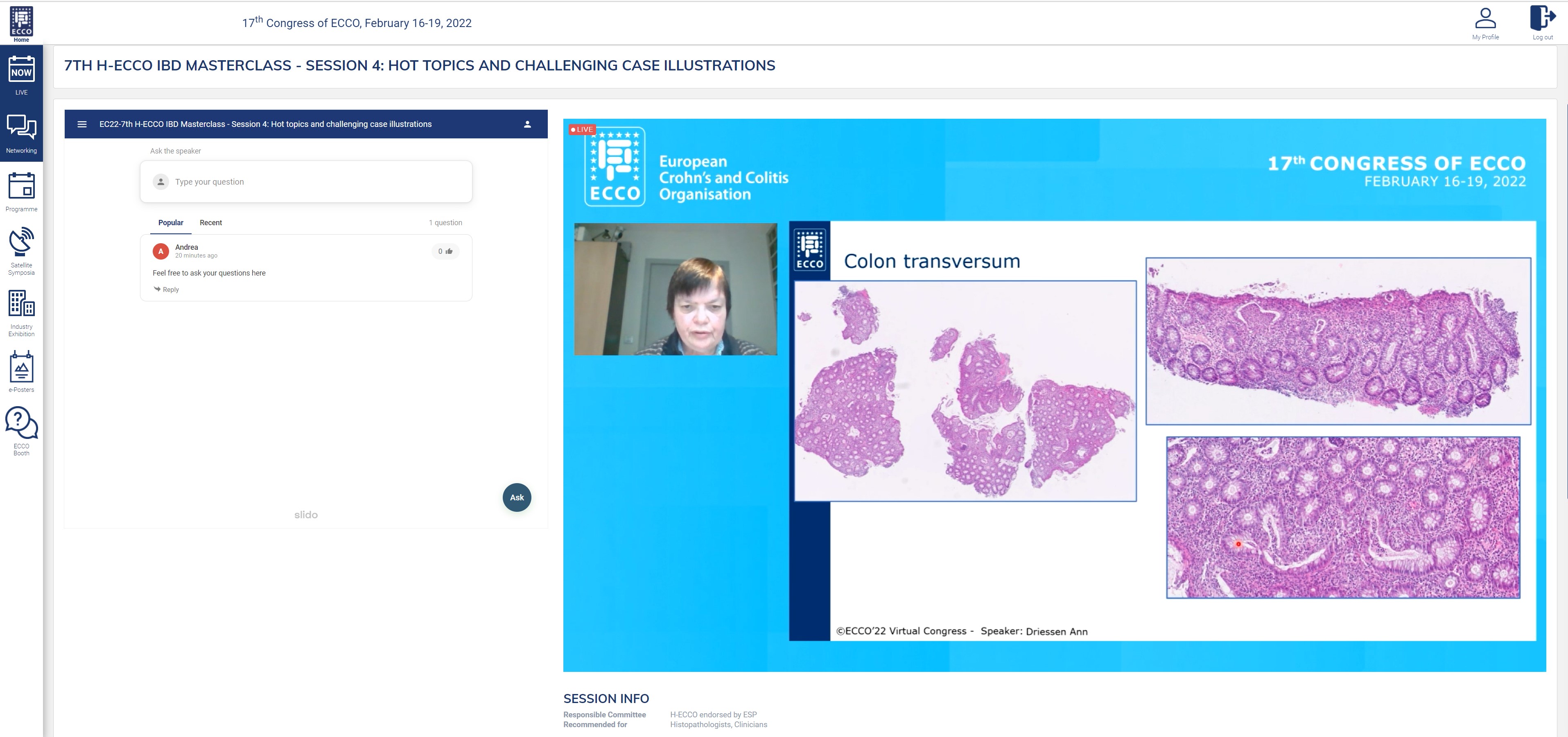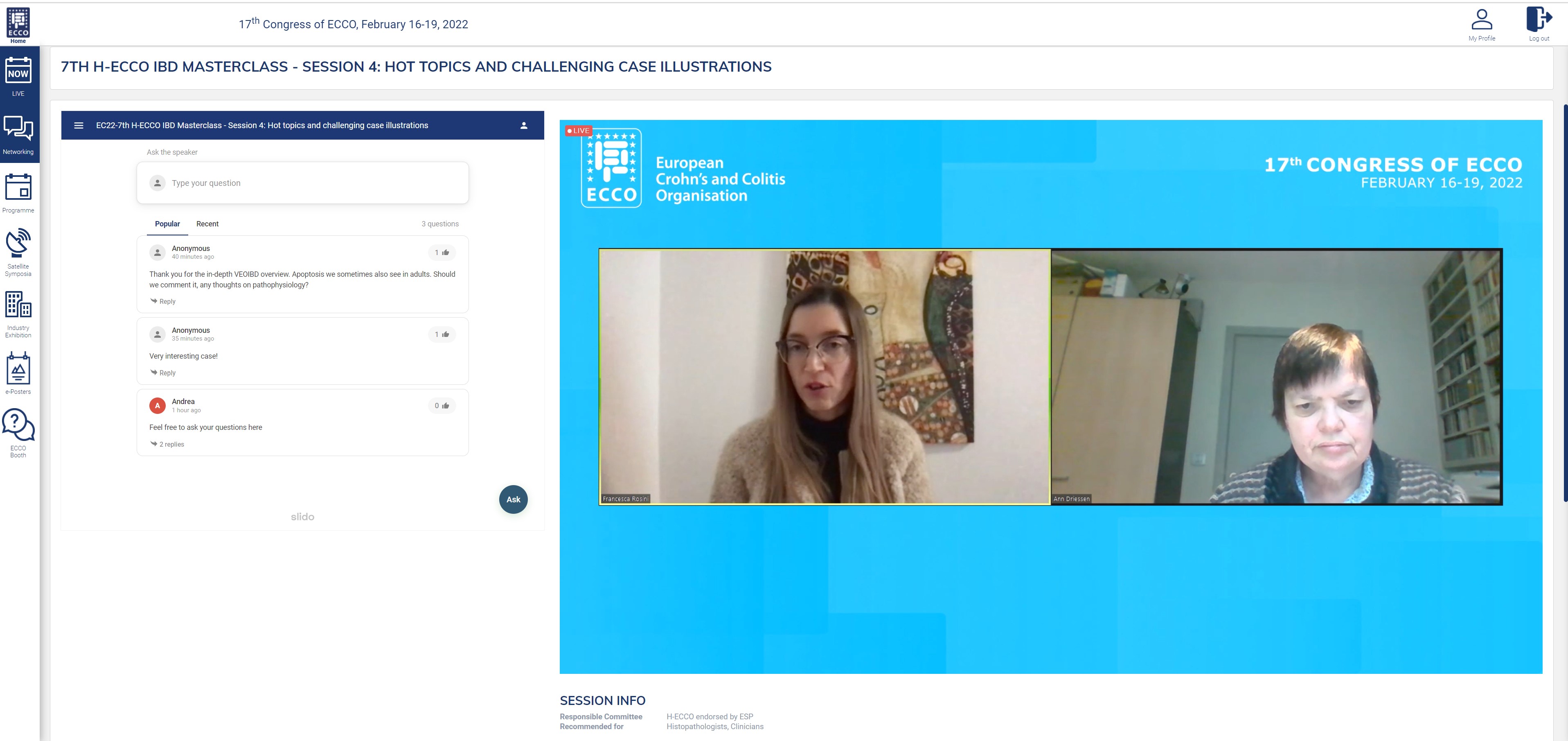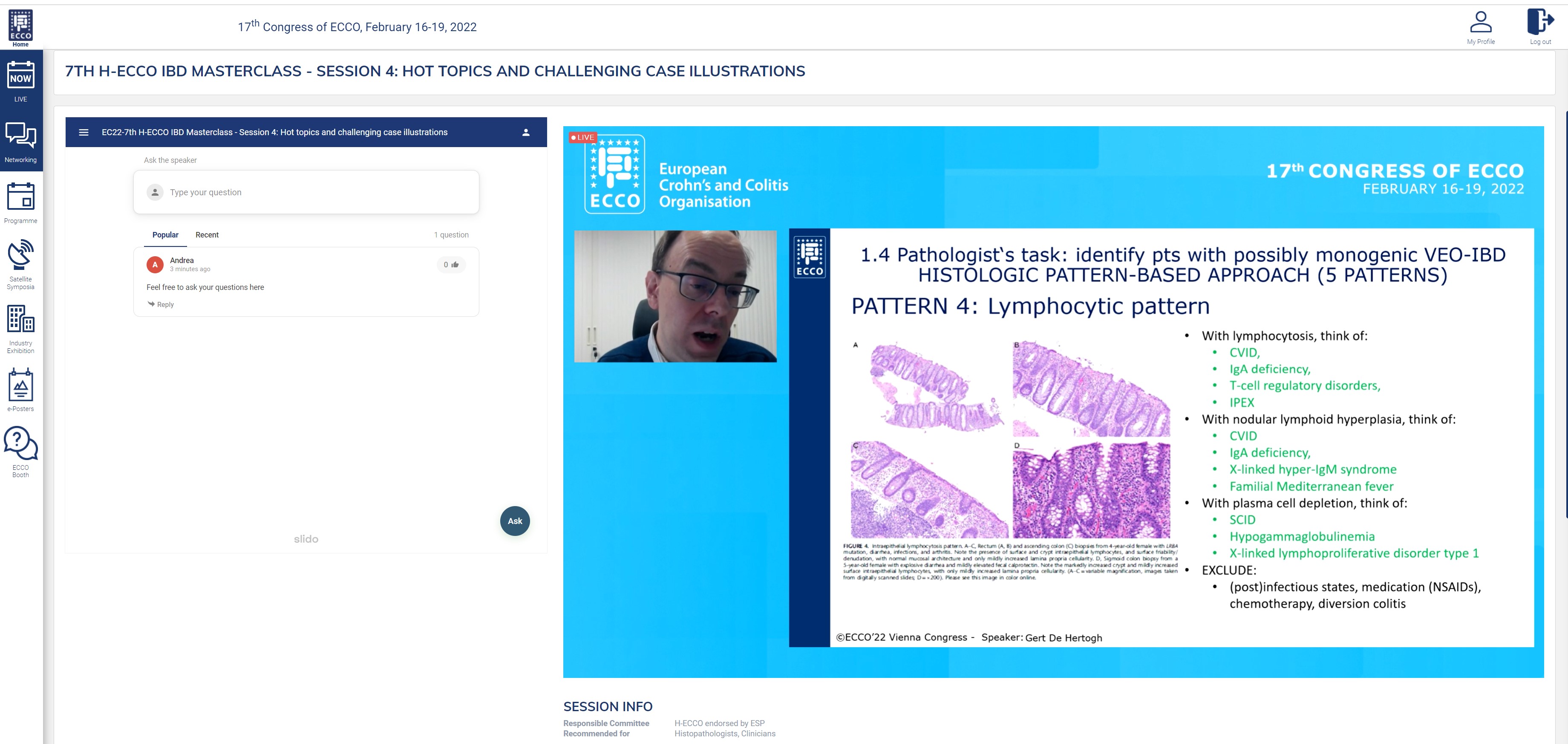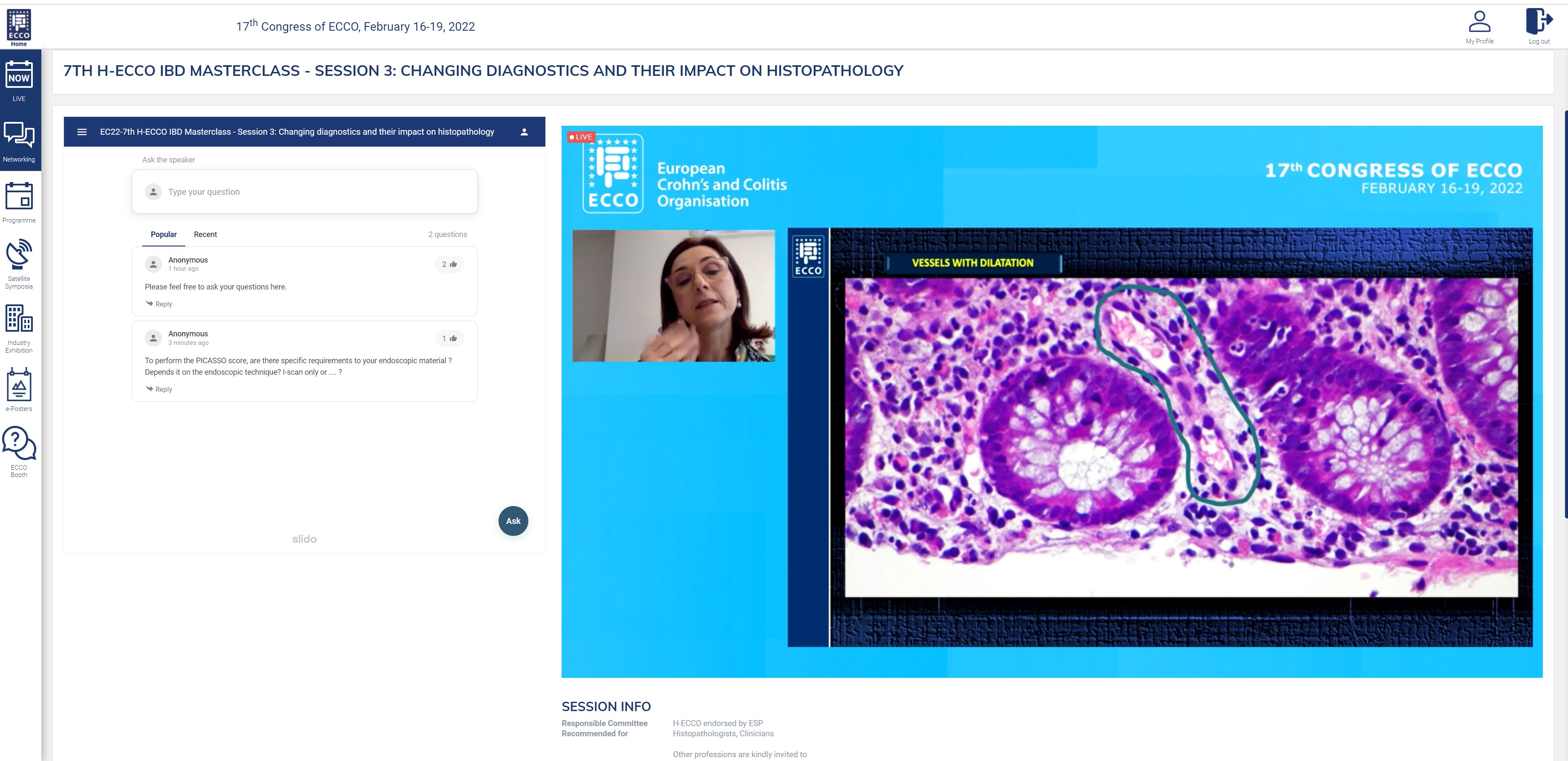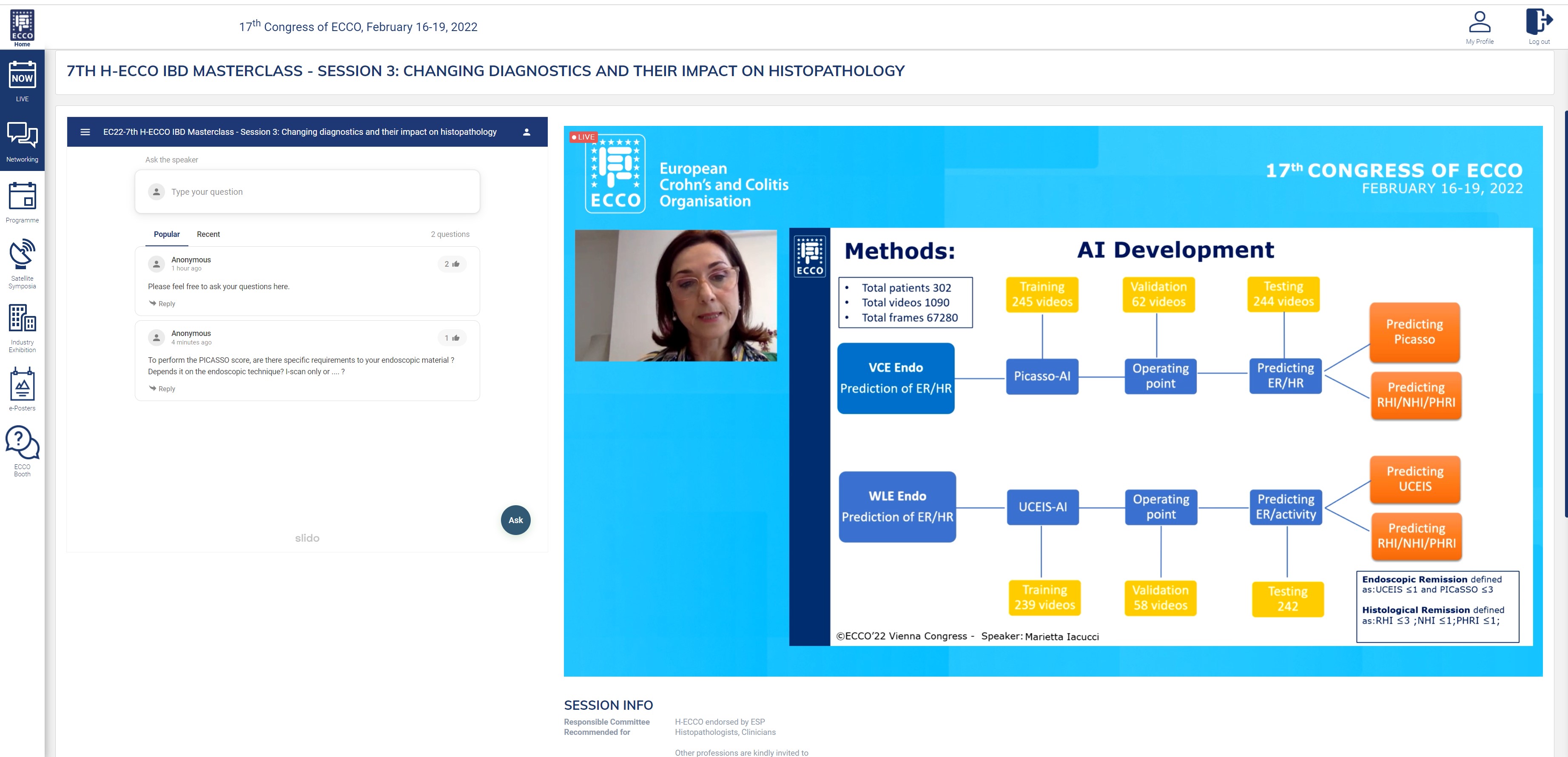Report on the 7th H-ECCO IBD Masterclass at ECCO’22
Gert De Hertogh, H-ECCO Chair
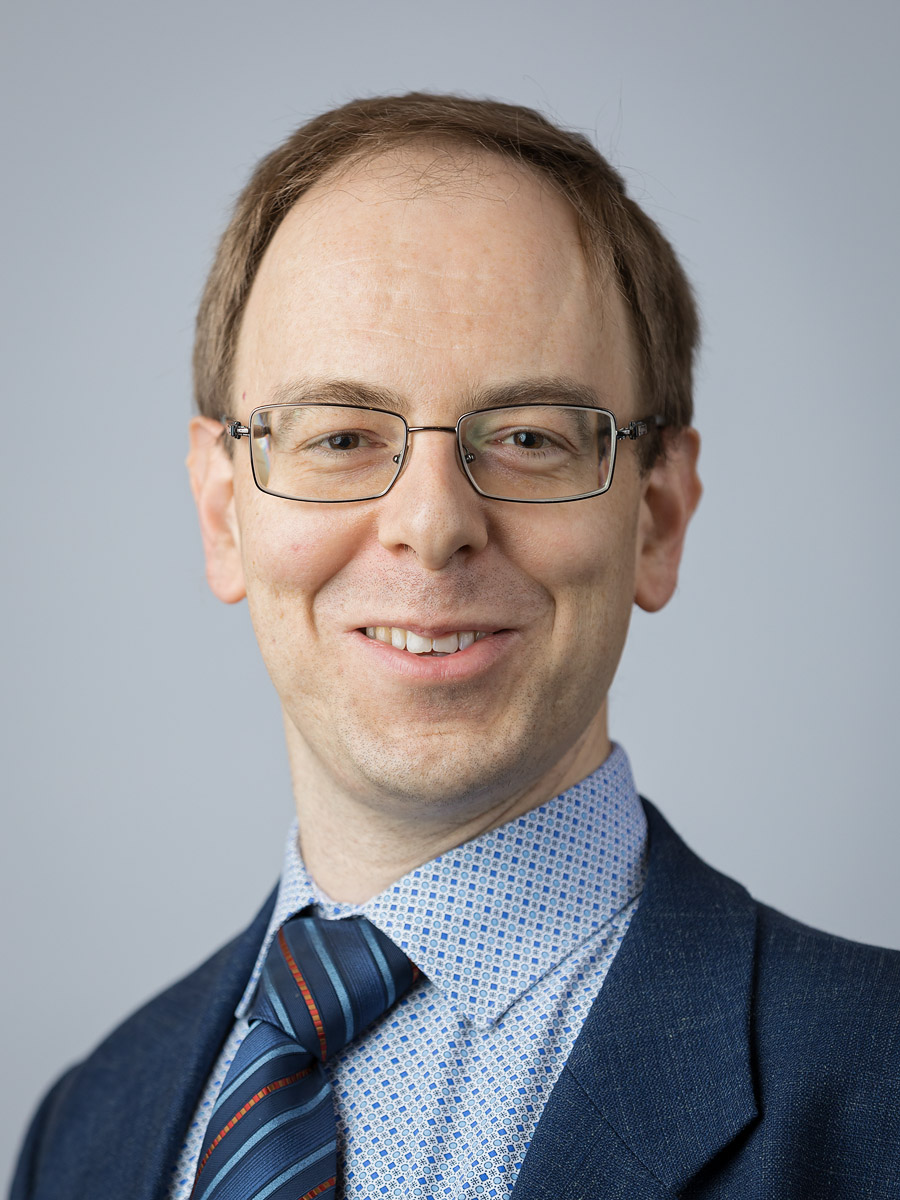 Gert De Hertogh Gert De Hertogh© ECCO |
Contrary to everyone’s ardent expectations and hopes, this year’s ECCO Congress was once again held virtually. While the experiences from 2021 had taught the H-ECCO Committee how to prepare for this and what to expect, we were so happy to be supported again by an excellent ECCO Office team.
For the 7th H-ECCO Masterclass, we chose to focus on four different topics: basics of IBD pathology, secondary complications of IBD, changing diagnostics and their impact on histopathology and, finally, hot topics and challenging case illustrations. This programme was endorsed by the European Society of Pathology and adapted to the needs of both histopathologists and other healthcare workers providing for IBD patients.
The first session on Thursday, February 17 entitled “Basics of IBD pathology” was chaired by Pamela Baldin (Brussels, Belgium) and Roger Feakins (London, UK). Pamela Baldin started with a talk on histological markers of chronicity in IBD, which are necessary for the primary diagnosis, and the quality and extent of which may change over time under therapy. Francesca Rosini (Bologna, Italy) followed with a presentation on the macroscopic and microscopic clues to differential diagnosis of Ulcerative Colitis (UC) and Crohn’s Disease (CD) in surgical specimens. We were then very happy to have with us Robert Riddell (Toronto, Canada), who talked on the differential diagnosis of UC and CD in endoscopic biopsy specimens. He also addressed the difficult topic of UC in the upper GI tract, covering the questions Does it exist?, How does it present in biopsies? and What is the differential diagnosis? I next stepped in with a presentation on the various mimickers of IBD such as infections, localised inflammatory disorders, iatrogenic lesions and other, rarer entities. Magali Svrcek (Paris, France) then discussed the very actual topic of the different morphological types of dysplasia in IBD and what we already know of their molecular background. This research field is evolving quickly, and we expect to include it in our future masterclasses. To close this session, we took the opportunity to invite Roger Feakins, Chair of the Digestive Diseases Working Group of the ESP, to present his work on the standardisation of histological reporting in IBD.
The purpose of the second session on Thursday, “Secondary complications of IBD” was to familiarise GI specialists and general pathologists with IBD manifestations and complications in different organ systems, of which they perhaps infrequently have the occasion to see biopsies. This session was chaired by Francesca Rosini and myself. Our first speaker was Francesca Bosisio, my colleague dermatopathologist (Leuven, Belgium). She gave a very complete and detailed account of all the various IBD-associated skin diseases. My co-chair, Francesca Rosini then discussed the extensive topic of vasculitic lesions in, or related to, IBD. I followed with a talk on pulmonary diseases in the context of IBD, which may be disease or drug related and can affect patients of all ages in all parts of the respiratory system. Monika Tripathi (Cambridge, UK) next addressed the difficult topic of neuromuscular complications in IBD. Ann Driessen (Antwerp, Belgium) closed this session by reviewing the different forms of neoplasia which may arise in IBD patients secondary to medical therapy.
The morning session on Friday, February 18 was devoted to the recent evolutions in IBD diagnostics outside of the proper field of histopathology. Of course, improvements in biochemical, radiological and endoscopic techniques and the introduction of artificial intelligence will potentially have a huge influence on the practice of histopathology, too. This part of the masterclass was chaired by Peter Bossuyt (gastroenterology, Bonheiden, Belgium) and myself. We started the session with a tandem talk given mainly by Peter Lakatos (gastroenterology, Budapest, Hungary), and partly by me, on the topic of faecal calprotectin as a possible predictor of histological disease activity. Faecal calprotectin certainly seems a promising marker, mainly in UC, although more specifications on measurement techniques and threshold values are needed. The next presentation was on the recent progress made in the radiological evaluation of fibrostenosing or ulcerating CD and its local complications, and was placed in the proper clinical context by Jordi Rimola and Julian Panes (radiology and gastroenterology, Barcelona, Spain). We then turned to endoscopy: The first presentation was by Marietta Iacucci (Birmingham, UK) on the PICaSSO virtual electronic chromo-endoscopy technique and its related Histologic Remission Index in UC. This talk was followed by one from my co-chair, Peter Bossuyt, in which he discussed extensively the recent evolutions in computer-aided endoscopy and its use as an aid to properly diagnose histological remission in UC.
The final session, chaired by Francesca Rosini and Ann Driessen, started with the by now classic overview of recently published “hot topics” in the IBD histopathology literature. These included (very) early onset IBD, CD differential diagnoses and molecular evaluation of IBD-associated colorectal neoplasia. The main focus of the closing session was, however, on four case presentations on such topics as IBD diagnosis and differential diagnosis (with expert overviews by Ann Driessen) and non-neoplastic and neoplastic complications of IBD (talks given by Francesca Rosini and Pamela Baldin).
As the H-ECCO Committee Chair, I once again sincerely wish to thank all our non-pathologist and pathologist colleagues who contributed to our masterclass as speakers or session chairs. Next, I want to thank and congratulate my fellow H-ECCO Committee Members (present and past), who compiled the programme for the masterclass, offered to prepare and give excellent talks and contacted the specialist speakers in their specific domains. It goes without saying that we are very thankful to the H-ECCO project team, especially Andrea Allmayer, for the continuous support in keeping everything and everybody on track.
Lastly, I want to thank you, the participants in the H-ECCO Masterclass from various disciplines, for your support and your questions and suggestions. I hope you enjoyed the virtual experience, but I would like even more to see you back live on the occasion of the ECCO 2023 Congress in Copenhagen, Denmark.
It was a pleasure working with you all,
Gert De Hertogh
Browse through the gallery:
Pictures are subject to copyright © ECCO



